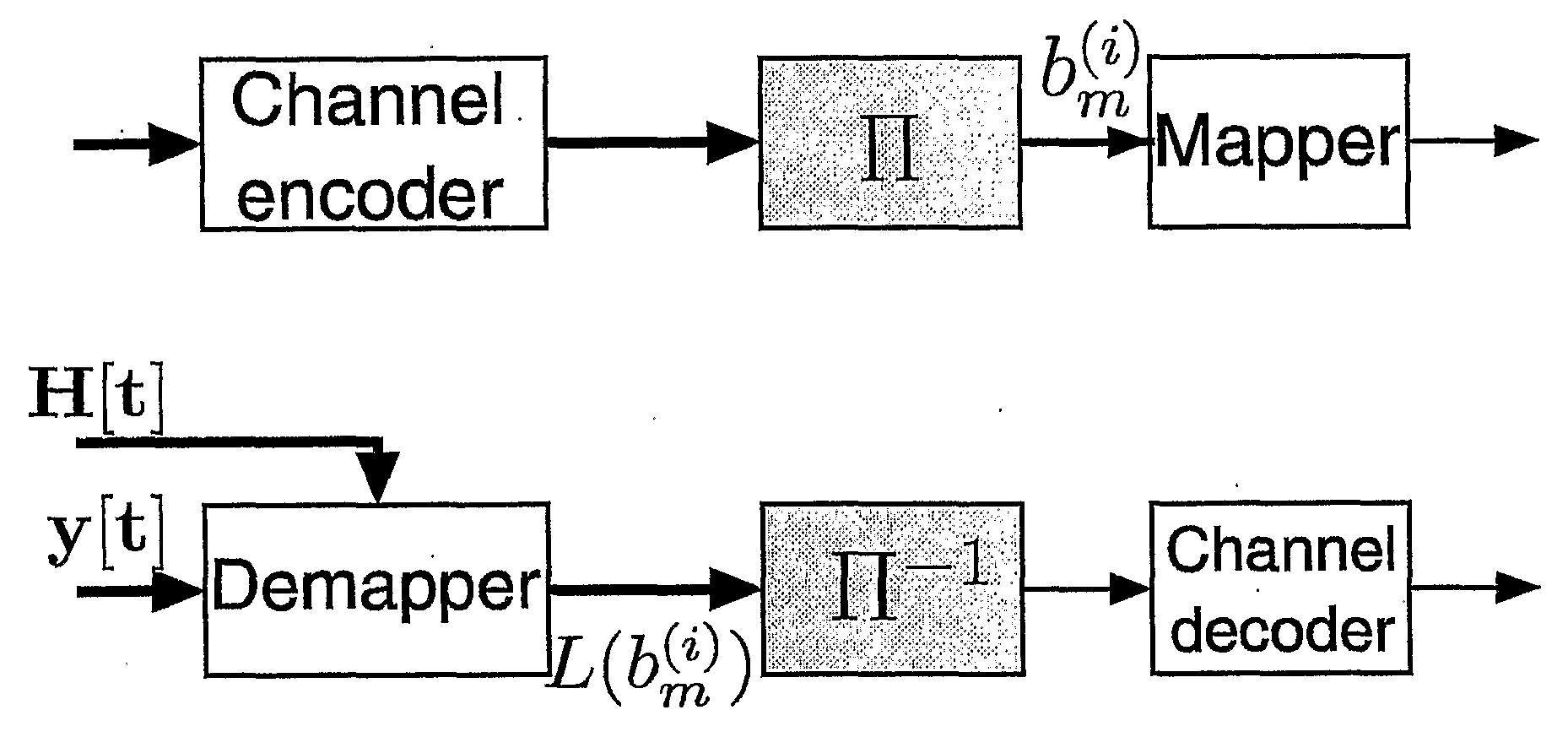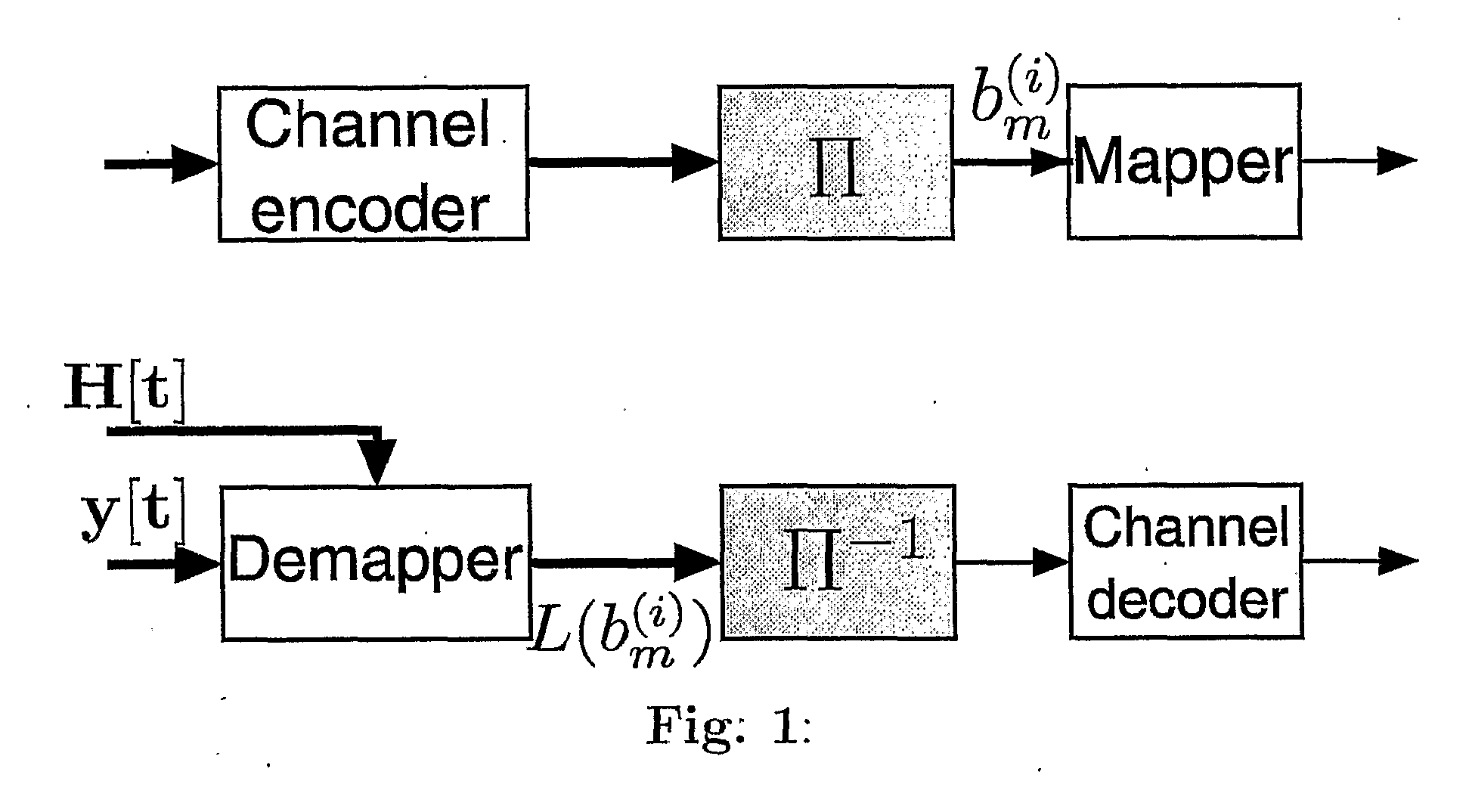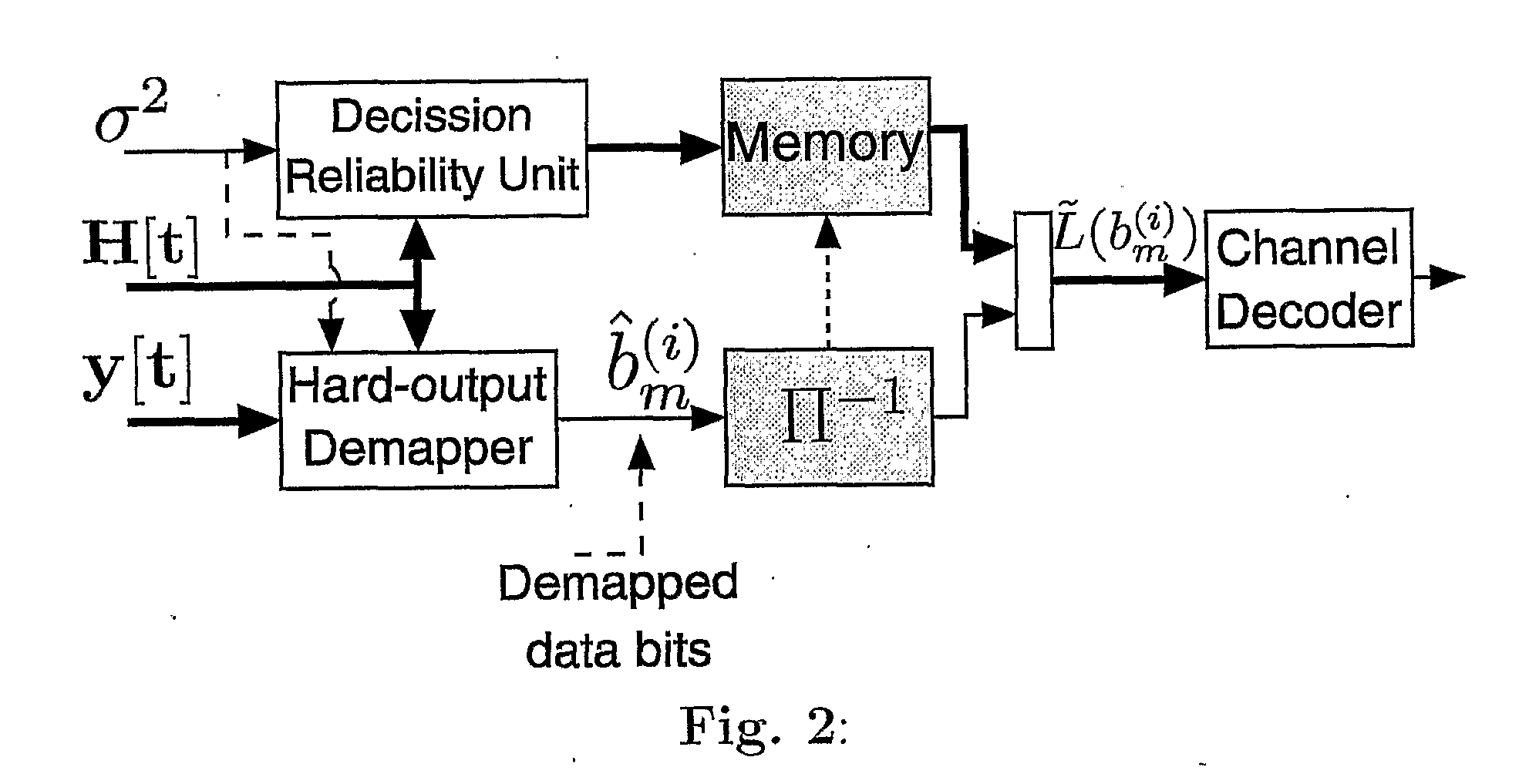Method for decoding digital information encoded with a channel code
a channel code and digital information technology, applied in the field of channel code decoding, can solve the problems of entailment of significant information loss, implementation complexity, and complexity, and achieve significant memory reduction in the interleaver, reduce the complexity of demapper, and mitigate the effect of performance loss
- Summary
- Abstract
- Description
- Claims
- Application Information
AI Technical Summary
Benefits of technology
Problems solved by technology
Method used
Image
Examples
Embodiment Construction
1 Outline
[0016]In the next section, we briefly describe the reference system model that we use for our explanations. In Section we present our new approach to compute approximate soft-information and in Sec. we apply the scheme to MMSE detection and illustrate the bit error rate (BER) performance by means of simulations. Sec. applies the presented method to sphere decoding with early termination. Conclusions are given in Sec. and the concept of the invention is analyzed in Sec.
2 Reference System
[0017]2.1 System Model
[0018]For clarity of exposition a fast-fading narrowband system with MT transmit and MR receive antennas is discussed in which the MIMO channel H[t] changes independently from one symbol to the next. This model replaces for example a wideband MIMO-OFDM system with a frequency selective channel and with proper interleaving in the frequency domain [7].
[0019]In the transmitter, the binary data stream b[t] is first encoded using a channel code having redundancy. The bits are...
PUM
 Login to View More
Login to View More Abstract
Description
Claims
Application Information
 Login to View More
Login to View More - R&D
- Intellectual Property
- Life Sciences
- Materials
- Tech Scout
- Unparalleled Data Quality
- Higher Quality Content
- 60% Fewer Hallucinations
Browse by: Latest US Patents, China's latest patents, Technical Efficacy Thesaurus, Application Domain, Technology Topic, Popular Technical Reports.
© 2025 PatSnap. All rights reserved.Legal|Privacy policy|Modern Slavery Act Transparency Statement|Sitemap|About US| Contact US: help@patsnap.com



